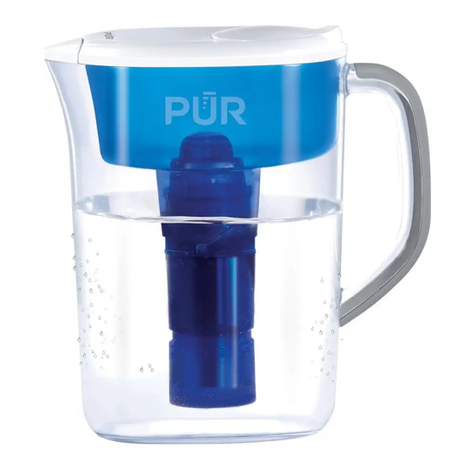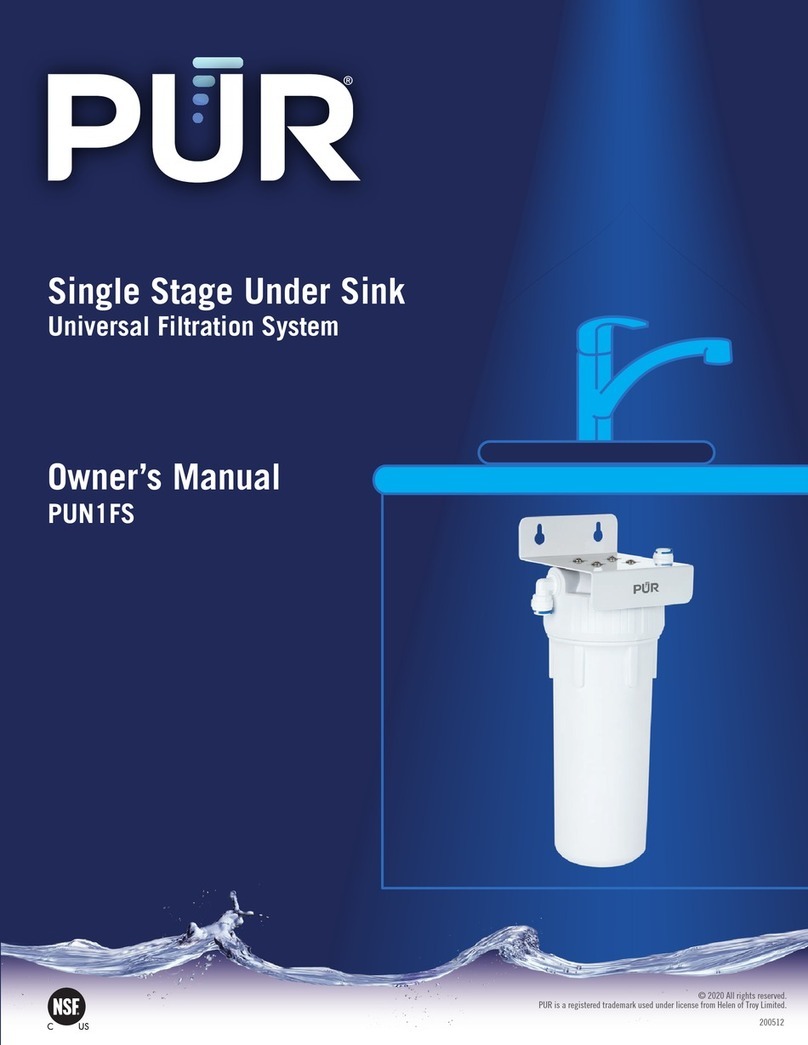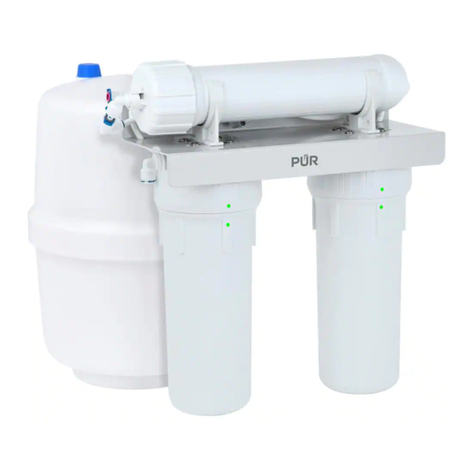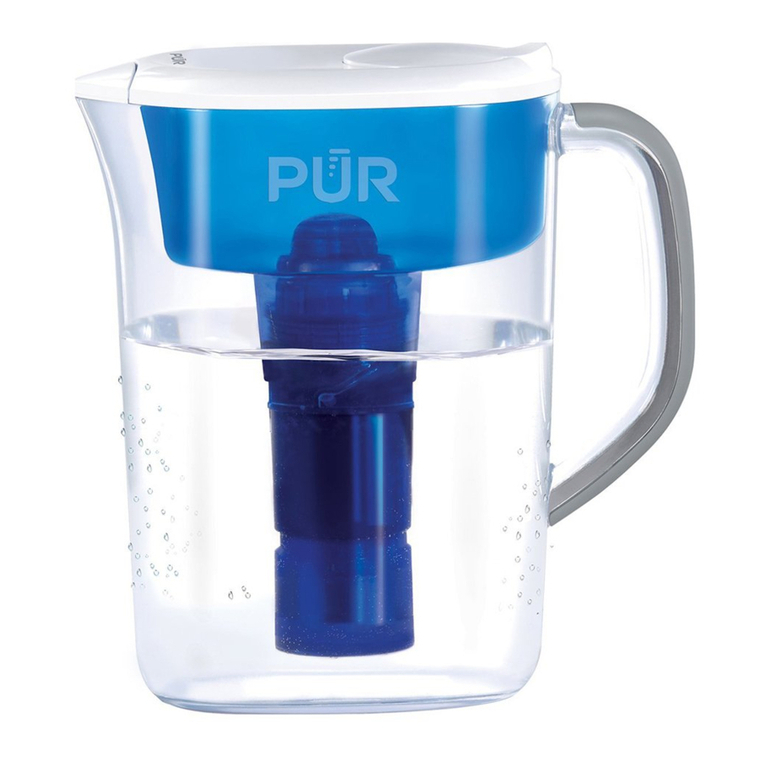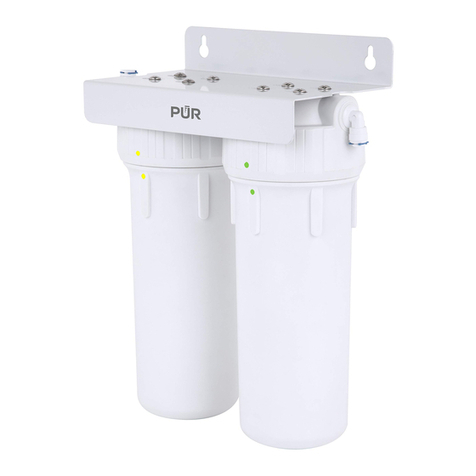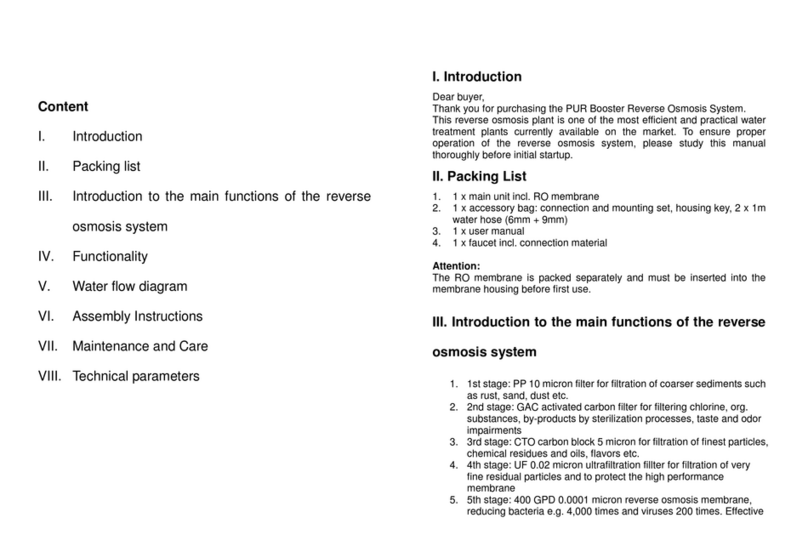
1
Table of Contents:
Conditions for Operation:
Safety Precautions:
• You must follow the guidelines to install this system. Check with your Province/State and local public works department for
plumbing and sanitation codes.
• If house water line pressure is over the maximum 100 psi (pounds per square inch), install a pressure regulator in the water
supply line before this system.
• The system is for cold water use only and must be protected against freezing, which can cause water leakage.
• Do not use with water that is microbiologically unsafe or of unknown quality without adequate disinfection before or after the
system. Systems certified for cyst reduction may be used on disinfected water that may contain filterable cysts.
• Make sure the water supply conforms to the specification guidelines. If the water supply conditions are unknown, consult your
local municipal water company or health department about the quality and the list of contaminants of the water in your area.
• While using the system for the first time, or prolonged non-use (such as during a vacation over one week), the system should
be flushed thoroughly.
• This system contains replaceable filter cartridge(s) with a limited service life.
Min. / Max. Operating Pressure ............................................ 30 - 100 psi (207-689 kPa)
Min. / Max. Operating Temperature ...................................... 40 - 113°F (4.4-45°C)
Flow Rate ............................................................................. 1 GPM (3.8 LPM)
Replacement Cartridges....................................................... PQCCRB (Carbon Block)
Capacity............................................................................... 1000 Gallons (3,780 Liters)
Flow Rate ............................................................................. 0.5 GPM (1.9 LPM)
Replacement Cartridges....................................................... PQCCRBL (Carbon Block) and PQCSED (Sediment)
Capacity............................................................................... 500 Gallons (1,890 Liters)
Safety Precautions ..................................................................1
Conditions for Operation ..........................................................1
Package Contents ....................................................................2
Tools Required for Installation ................................................2
Installation Instructions......................................................3 - 6
* Installing Quick-Connect Filter..............................................3
* Un-installing Quick-Connect Filter........................................3
* Connecting to Cold Water Line ..............................................4
* Drilling the Faucet Hole.........................................................4
* Installing the Faucet.............................................................5
* Mounting the System under the Sink.....................................5
* Connecting the Tubing from Water Line to System ................6
* Connecting the Tubing from System to Faucet ......................6
* Connecting the Tubes Using Quick-Connect Fittings.............6
Start-up Instructions................................................................7
Periodic System Maintenance...................................................7
Filter Cartridge Replacement Instructions ...............................7
Troubleshooting Guide..............................................................8
Performance Data Sheet...........................................................9
Replacement Parts List...................................................10 - 11
Warranty.................................................................................12
General Conditions
Conditions for PQC1FS
Conditions for PQC2FS














